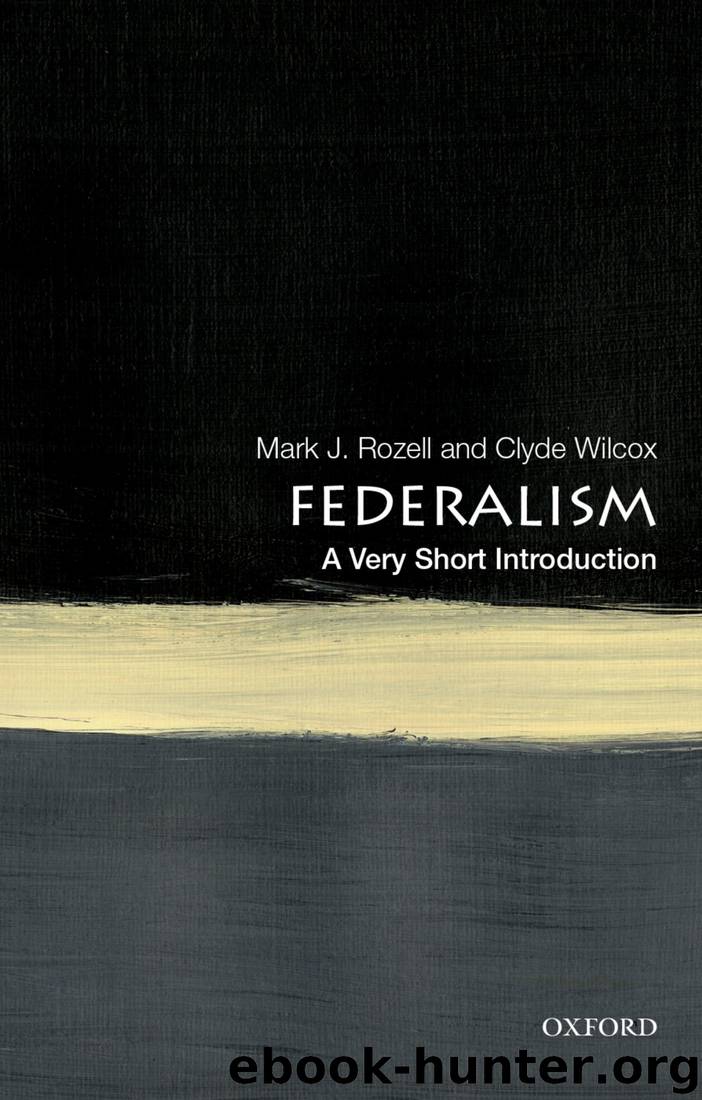Federalism by Mark J. Rozell & Clyde Wilcox

Author:Mark J. Rozell & Clyde Wilcox
Language: eng
Format: epub
ISBN: 9780190900076
Publisher: Oxford University Press
Published: 2019-08-23T00:00:00+00:00
US territories
There are five permanently inhabited US territories: Puerto Rico, the US Virgin Islands, Guam, the Northern Mariana Islands, and American Samoa. Each became a territory in a different manner. Puerto Rico, for example, was a Spanish colony until in 1898, when the United States gained control of it in the agreement that ended the Spanish–American War. Puerto Rico existed as an unincorporated territory until a federal law in 1917 granted Puerto Ricans US citizenship. In 1948, the US government approved a constitution of Puerto Rico and established it as a commonwealth. Territories of the United States may apply for statehood status. In June 2017, the citizens of Puerto Rico voted in favor of statehood in a popular referendum. However, this referendum is nonbinding, because only Congress can approve statehood for a territory.
With the exception of American Samoa, inhabitants of the territories are US citizens. Under the Immigration and Nationality Act, American Samoa’s residents are considered nationals and may apply to become naturalized citizens. Each of the territories has its own elected system of government and has a delegate (or resident commissioner, in the case of Puerto Rico) in the US Congress who may vote in committee but not in the full House of Representatives. All of the territories, except American Samoa, have a system for appealing cases to the US federal district courts. American Samoa’s final court is the Samoan High Court. The US secretary of the interior appoints American Samoa’s chief justice, and the territorial governor appoints the lower judges. In the remaining four territories, the elected governor appoints the judges. The two major political parties assign delegate slots at their national nominating conventions every four years to the five US territories. But the citizens of the territories cannot vote in the general election.
The US federal system’s vast array of state, local, and territorial governments can be confusing to those unfamiliar with the country’s traditions and practices. Indeed, understanding the system is complicated even for US citizens themselves. In practice, US government policies demonstrate that the needs of the territories are a relatively low priority. In 2017, for instance, a massive hurricane devastated the island of Puerto Rico, leaving as many as 80 percent of the people without electricity for weeks and even months. The federal response was slow and highly inadequate, in marked contrast to the federal response to another massive hurricane a month earlier that caused severe damage in Houston, Texas. Advocates of statehood status for Puerto Rico picked up support after the hurricanes, in part as a result of the perception that US federal policies would better serve the island under state, rather than territorial, status. The governor of Puerto Rico even pleaded with President Trump to put an end to the United States’ “territorial-colonialism” and support statehood, but the president refused.
Download
This site does not store any files on its server. We only index and link to content provided by other sites. Please contact the content providers to delete copyright contents if any and email us, we'll remove relevant links or contents immediately.
| Anarchism | Communism & Socialism |
| Conservatism & Liberalism | Democracy |
| Fascism | Libertarianism |
| Nationalism | Radicalism |
| Utopian |
The Secret History by Donna Tartt(18163)
The Social Justice Warrior Handbook by Lisa De Pasquale(11954)
Thirteen Reasons Why by Jay Asher(8452)
This Is How You Lose Her by Junot Diaz(6440)
Weapons of Math Destruction by Cathy O'Neil(5832)
Zero to One by Peter Thiel(5494)
Beartown by Fredrik Backman(5357)
The Myth of the Strong Leader by Archie Brown(5239)
The Fire Next Time by James Baldwin(5017)
How Democracies Die by Steven Levitsky & Daniel Ziblatt(4958)
Promise Me, Dad by Joe Biden(4908)
Stone's Rules by Roger Stone(4859)
100 Deadly Skills by Clint Emerson(4691)
A Higher Loyalty: Truth, Lies, and Leadership by James Comey(4552)
Rise and Kill First by Ronen Bergman(4545)
Secrecy World by Jake Bernstein(4389)
The David Icke Guide to the Global Conspiracy (and how to end it) by David Icke(4381)
The Farm by Tom Rob Smith(4324)
The Doomsday Machine by Daniel Ellsberg(4246)
